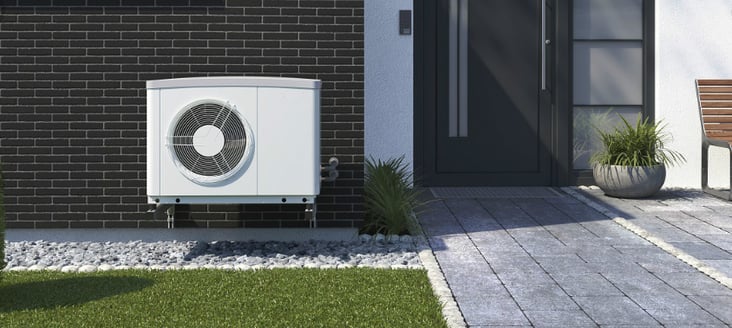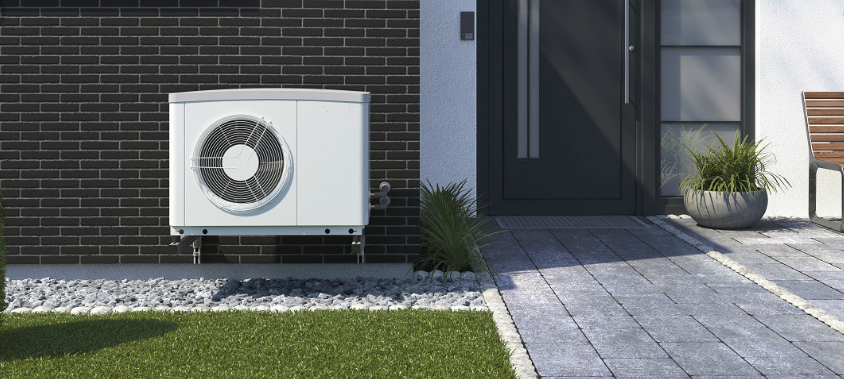For property owners who’ve opted for energy-efficient heating solutions such as air source heat pumps, many of modern-day energy woes are a thing of the past. While heat pumps are now an exceedingly popular choice in the market, air source devices, in particular, require some thought and research before purchase. While energy savings and comfort are guaranteed in this regard, its true effectiveness is dependant on a number of factors.

Our blog this week looks into the top 4 consideration anyone interested in heat pump options, specifically air source devices, should bear in mind. Keep reading to find out!
Location
When it comes to installing your air to water heat pump, as they are commonly known, where you place it in your property plays a significant role in terms of heat loss.
Manufacturers primarily offer two versions of the system, either a monobloc or a split system, which comes with a separate condenser and internal compressor unit. The former is the best choice if the space inside your home or office is a little tight. Here, the system can be placed outside, albeit not more than 6m from your property. This is because the system heats water and circulates it into the building, and placing it too far apart may result in heat loss from the pipework between the unit and the property.
With regard to the split system, if accommodating the internal compressor inside is a possibility, the condenser can be placed within 30m of your home or office, given that the connection between the internal and external units are cold refrigerant lines. Here, heat loss is minimal.
Supplementary heating solutions
While a few radiators wouldn’t hurt in this context, pairing too many of these with heat pump options such as air source devices isn’t likely to prove too effective. For reasons of energy efficiency, it’s best to stick to radiators in a few rooms in your property, for instance, first-floor bedrooms or workspaces.
For a truly efficient heating solution that can transform your property into a low energy space, underfloor heating is an excellent choice. When paired with an air source heat pump, this heating solution will run at the lowest possible flow temperature, maximising the efficiency of your pump.
Before doing so, however, ensure that accurate heat loss calculations are conducted to ensure that flow temperatures stay low at all times. By choosing the right service provider, this can be undertaken in a skilful and professional manner.
Hot water
When it comes to the specific hot water requirements of your property, determining usage across all occupants is an important first step.
If your requirements are considerable, your storage temperature will be at a minimum of 50°C, which can have an impact on your heat pump, its efficiency, and, ultimately, your energy costs.
Further, this would also mean that storage volume would be greater than an average fossil fuel alternative, and thus space planning would also have to be thrown into the mix.
In this regard, it is important to ensure that the heating coil of your device has a suitable surface area for operation at levels befitting those of air source heat pumps. Certain manufacturers offer cylinders that are specifically paired for these devices. These are, therefore, a great option if your hot water requirements are significant.
Noise from your heat pump
When it comes to the noise generated by heat pump options, location plays an important role.
Given that these devices are known to produce a certain level of noise, the further away it is from your property, the lesser noise in your internal surroundings. If you live in a quiet and rural area, having your air to water heat pump turned on overnight may require some getting used to.
The noise generated by this device is directional, so when it comes to the placement of your system, make sure you pick a spot that causes the least disturbance to you and your neighbours.
However, it must be noted that while air to water heat pumps are generally known to produce a certain amount of noise, advancing technology has meant that this has greatly reduced in newer models. Thus, when you’re in the market for these devices, make sure you opt for those with noise-cancelling features.
Key Takeaways
Heat pump options such as air source devices are becoming a staple feature in many properties across Australia.
While you can’t go wrong with sustainable heating solutions such as this, it pays to do your research before investing in these systems. When it comes to efficiency and energy savings, air source heat pumps are rather reliant on their surroundings. By paying attention to the factors set out above, make the right decision for your property today.

